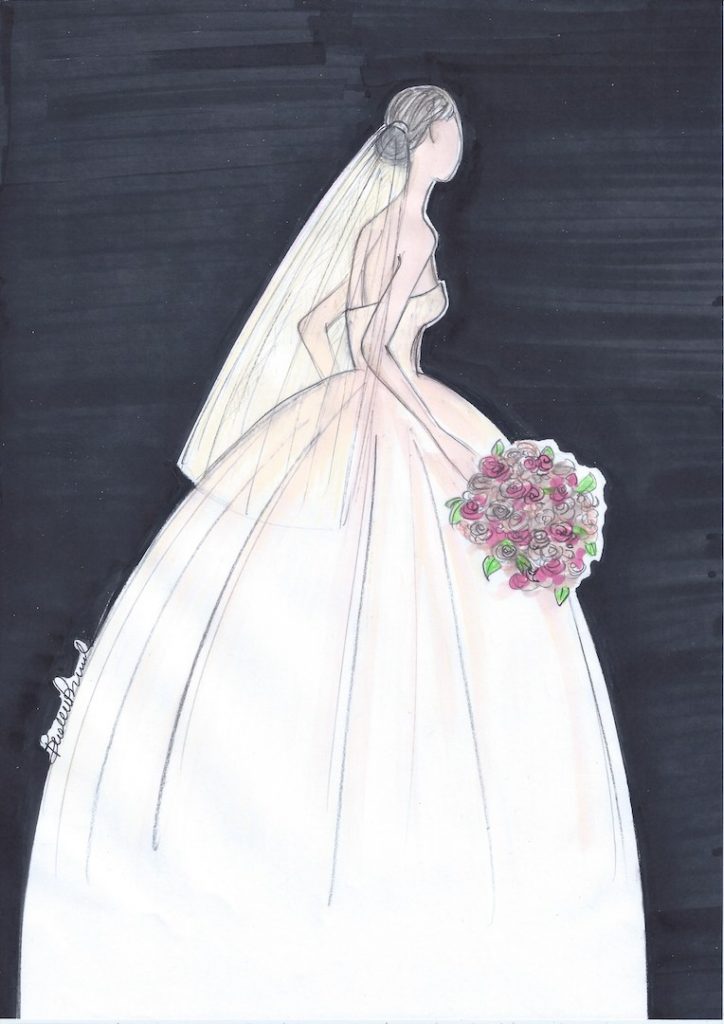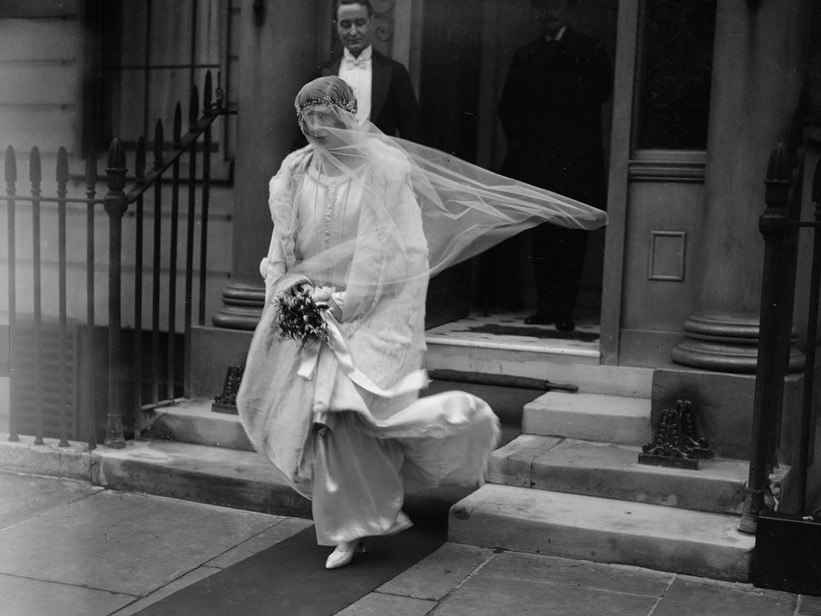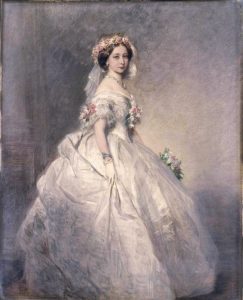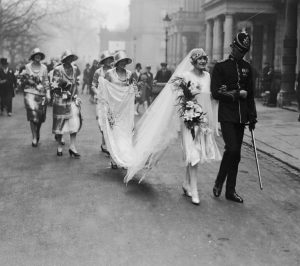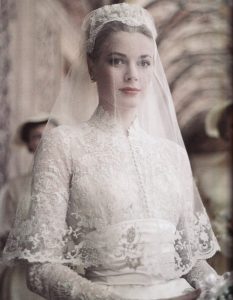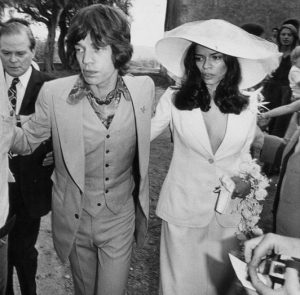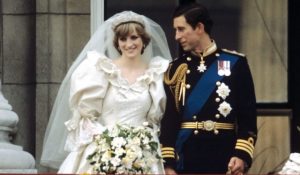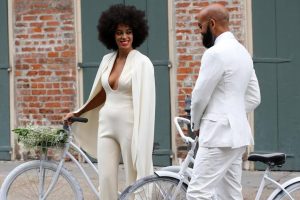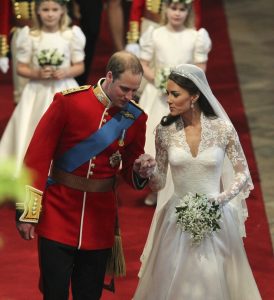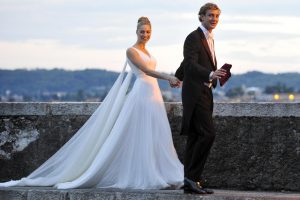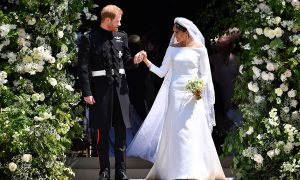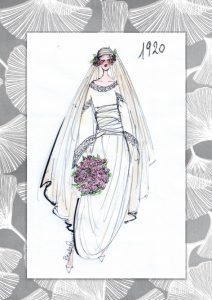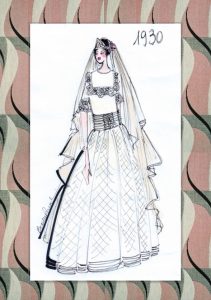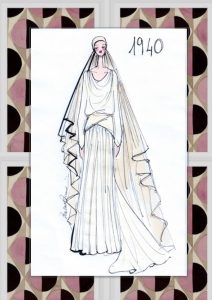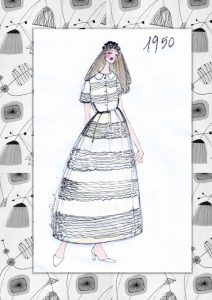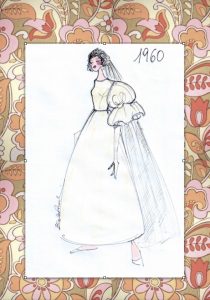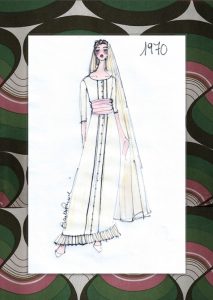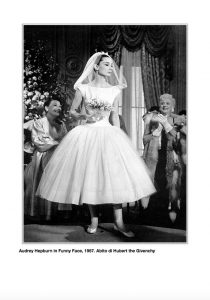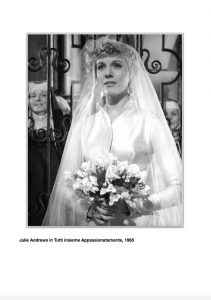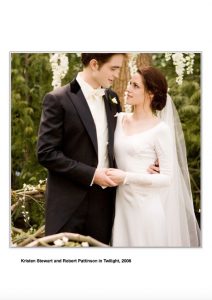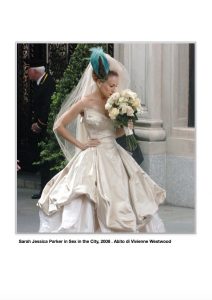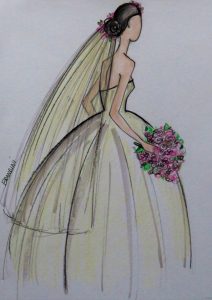“A day to remember” by Beatrice Brandini
Elizabeth Cator e Michael Bowes-Lyon in the day of their marriage, 1928
Over the centuries, the wedding dress has undergone many transformations, as all fashion and costume has in fact been the testimony (and form) of the times that characterized it. But what has remained undamaged over time is undoubtedly its charm.
The brides of today have a vastness of proposals that gives them total freedom, however the tradition remains, at least in this area, still the key word, giving rise to wonderful dresses that they hope to make women of the Princesses feel.
Among the brands that I love most for i vestiti da sposa (wedding dresses) is undoubtedly the Spanish Pronovias, that realizes dream clothes, trying to satisfy the most different needs, for this reason their collections are very wide, whose common denominator remains class and refinement.
Queen Victoria II portrayed on her wedding day, 1840
Queen Victoria II of England is credited with the custom, which became popular, of wearing a white dress on her wedding day. At that time, we are talking about 1840, the wealthier classes used to dress in more colorful and garish clothes, the poorer ones with dark colors, so that they could reuse the dress on other occasions. But Queen Victoria wanted to focus on simplicity, breaking the rules and giving a strong message of love and sobriety. Surely this episode contributed to spreading this tradition, in fact many were the celebratory paintings that portrayed her in her white dress (at that time there were no cameras yet), since then the brides of high society wore white on the day of their wedding.
Captain Howard Green with Miss Irene Harman on their wedding day, 1928
Grace Kelly in 1955, the dress was designed by Helen Rose, MGM costume designer. A fairy tale and a dream, perhaps the most beautiful bride of all.
From that event centuries have passed (literally), but the day of your own is still represented as one of the most exciting things in our lives; the wedding dress we choose is something that goes beyond its decorative and aesthetic function, in the wedding dress there are symbols and motivations, dreams and expectations, the inclination of one’s personality and the message we want to give.
Mick Jagger and Bianca Jagger, May 1971. When it is said to have “physique du rôle”, in this case it applies to both spouses.
Prince Charles and Diana Spencer, July 1981, perhaps the most media-like marriage in history. Unfortunate epilogue for one of the most beloved princesses in the world.
Already in the Middle Ages the choice of a wedding dress meant affirming one’s status, combining political and economic interests between wealthier families, which was why it had to be very precious, made with rich fabrics in bright colors. For the Romans it was yellow, in the Red Middle Ages, in the Golden Renaissance, in the Napoleonic Napoleonic era … Today, fortunately, we are freer and the fashion companies that dedicate themselves with magic to this tradition, that is the realization of clothes for marriage, can give vent to their creativity.
Solange Knowles and Daniel Smith, 2004. Great personality, great charisma for Beyoncé’s younger sister.
Prince William, Duke of Cambridge and Catherine Middleton, April 2011. Royal couple with the desire to be a “normal” couple, especially thanks to the bride who seems to be a really nice person.
Pierre Casiraghi and Beatrice Borromeo, August 2015. A beautiful couple to whom I wish so much happiness, also because the Casiraghi family often did not have it.
Even the foggia has undergone transformations, at the beginning of the nineteenth century the wedding dress was in empire style, from the middle to the late nineteenth century it became more traditional, tight at the waist with a wide skirt. At the beginning of the twentieth century the dress began to be used only for the wedding day, giving rise to “bridal fashion”. In the Ten years the brides wearing a long train and the dress is rather fluid. Between the Twenties and the Thirties it became rather short, no veil but worn with a simple cloche, the promoter of this modernization could only be Coco Chanel. From the thirties onwards it returns to be “classic”, a mermaid with a long veil. The war of the forties slows down this transformation and the dress is lent or rented. In the fifties Christian Dior creates the “new look”, that is bare shoulders, enhancement of the breast and waistline, with the width of the skirts becoming important. Since the 1960s, women have become more aware, the advent of feminism has shifted attention from romanticism to freedom, getting married as you wish, wearing trousers, tunics, and wide-brimmed hats.
Prince Harry and Meghan Markle, May 2018. The realization of a dream (and a story) that seemed impossible
I have designed some of the most significant styles during a century of bridal fashion.
A 20s wedding dress by Beatrice Brandini
A wedding dress from the 1930s, by Beatrice Brandini
A wedding dress from the 40s, by Beatrice Brandini
A fifties wedding dress by Beatrice Brandini
A 60s wedding dress by Beatrice Brandini
A 70s wedding dress by Beatrice Brandini
Finally, remember not to choose the wedding dress according to the fashions, or worse, trying to emulate someone, the wedding dress, more than any other garment, must be something intimate and personal, something that makes you feel at your comfortable and that enhances your beauty and your happiness on a very special day.
Some images of the most beautiful brides seen in the cinema
“Funny Face”
If you are looking for an original wedding dress, abito da sposa corto in pizzo (for example, a short one in lace) the right one can be found on the Pronovias website. If your physicality allows you they are delicious, reminiscent of the sixties, you will feel a little Twiggy a little Audrey Hepburn.
“The Sound of Music”
“Twilight”
“Sex in the City”
“The send test” by Beatrice Brandini
“A woman rarely asks for advice before buying her wedding dresses” Joseph Addison (1672 – 1719)
“For a marriage to work, one must fall in love many times, but always of the same person.” Mignon McLaughlin
Good life to everyone!
Beatrice


